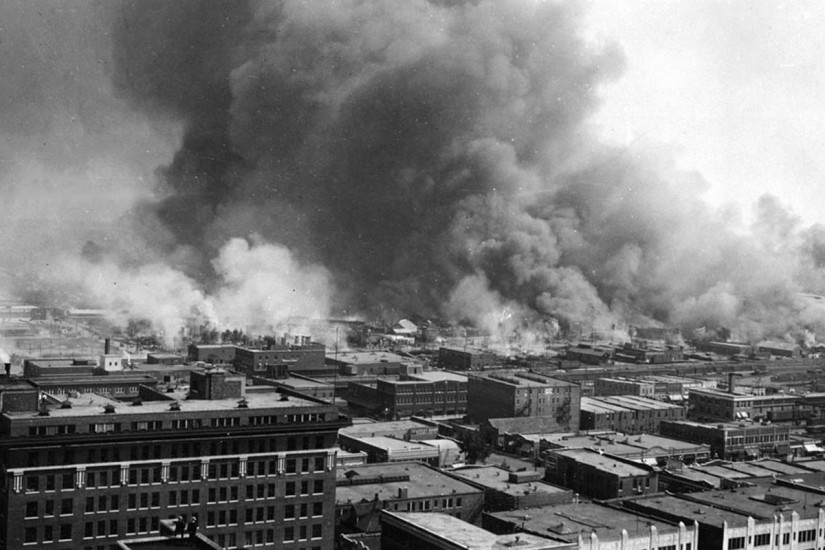In 1921, Tulsa, Oklahoma’s Greenwood District, known as Black Wall Street, was one of the most prosperous African-American communities in the United States. But on May 31 of that year, the Tulsa Tribune reported that a black man, Dick Rowland, attempted to rape a white woman, Sarah Page. Whites in the area refused to wait for the investigative process to play out, sparking two days of unprecedented racial violence. Thirty-five city blocks went up in flames, 300 people died, and 800 were injured. Defense of white female virtue was the expressed motivation for the collective racial violence.
Accounts vary on what happened between Page and Rowland in the elevator of the Drexel Building. Yet as a result of the Tulsa Tribune’s racially inflammatory report, black and white armed mobs arrived at the courthouse. Scuffles broke out, and shots were fired. Since the blacks were outnumbered, they headed back to Greenwood. But the enraged whites were not far behind, looting and burning businesses and homes along the way.
Nine thousand people became homeless, Josie Pickens writes in Ebony. This “modern, majestic, sophisticated, and unapologetically black” community boasted of “banks, hotels, cafés, clothiers, movie theaters, and contemporary homes.” Not to mention luxuries, such as “indoor plumbing and a remarkable school system that superiorly educated black children.” Undoubtedly, less fortunate white neighbors resented their upper-class lifestyle. As a result of a jealous desire “to put progressive, high-achieving African-Americans in their place,” a wave of domestic white terrorism caused black dispossession.
The creation of the powerful black community known as Black Wall Street was intentional. “In 1906, O.W. Gurley, a wealthy African-American from Arkansas, moved to Tulsa and purchased over 40 acres of land that he made sure was only sold to other African-Americans,” writes Christina Montford in the Atlanta Black Star. Gurley provided an opportunity for those migrating “from the harsh oppression of Mississippi.” The average income of black families in the area exceeded “what minimum wage is today.” As a result of segregation, a “dollar circulated 36 to 100 times” and remained in Greenwood “almost a year before leaving.” Even more impressive, at that time, the “state of Oklahoma had only two airports,” yet “six black families owned their own planes.”
These African-Americans’ economic status could not save them from the racial hostility of their day. Greenwood survivors recount disturbing details about what really happened that night. Eyewitnesses claim “the area was bombed with kerosene and/or nitroglycerin,” causing the inferno to rage more aggressively. Official accounts state that private planes “were on reconnaissance missions, they were surveying the area to see what happened.”
